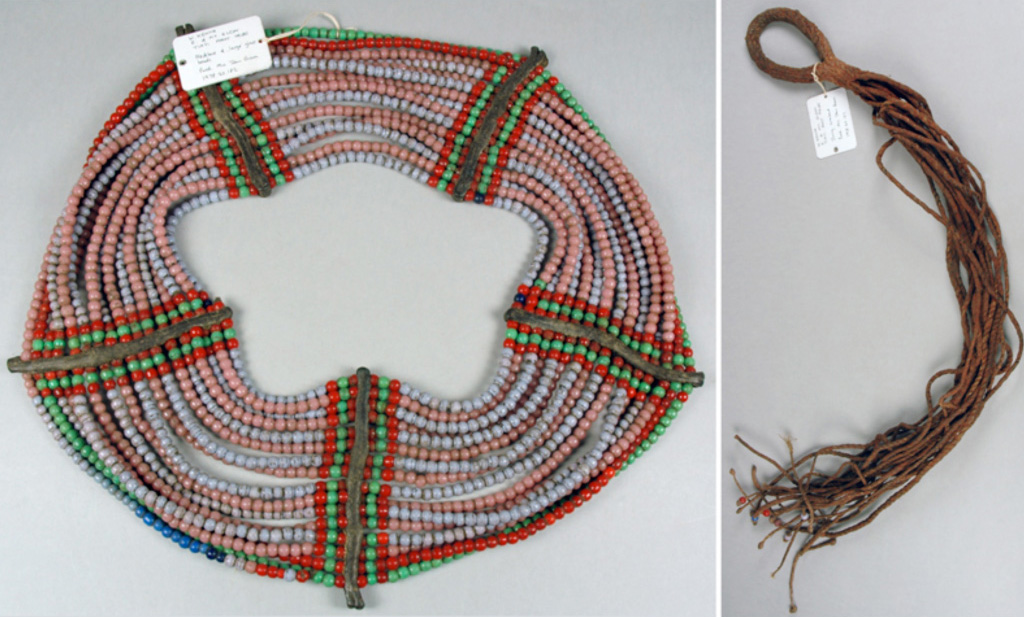Necklace and arm ornament
Pokot people, Kenya
 Collected and purchased from Jean Brown in 1978; 1978.20.182 and 1978.20.157
Collected and purchased from Jean Brown in 1978; 1978.20.182 and 1978.20.157
The large necklace is made from different coloured glass beads with leather spacers. Known as soniok, this type of ornament is worn by circumcised Pokot girls and married women from the time they leave circumcision seclusion. String arm ornaments such as this, covered in ochre and decorated at the ends with glass beads, are known as adado. In contrast to the soniok, it was worn as a 'practice ornament' by young girls when dancing, pretending that they have been circumcised.
The Pokot are thought to have originally lived in the Cherangani Hills district of Kenya’s western highlands. These are the ‘Mountain’ or ‘Hill’ Pokot. Around the beginning of the 19th century some migrated eastwards, one group settling into a pastoralist life in the Masöl plains, and another going further, through the Kerio Valley and up to Mount Tiati in the Rift Valley. These ornaments were made by the Pokot community living around Mount Tiati. In the 1950s, both the East and West Pokot were referred to, along with several other tribal peoples, as belonging to the larger ‘Kalenjin’ ethnic and language group.
Pokot women of all ages wear large, disc-like necklaces made from the stems of asparagus plants. The girls make these special soniok necklaces themselves during the seclusion period, usually using beads provided by their father. They are not removed at night and are worn under another type of necklace called lokeper. Up to ten of these necklaces in total may be worn, as found on circumcised but as-yet unmarried women.
For several months after circumcision (clitoridectomy) the girls wear white paint on their faces and a hood made of leather blackened with charcoal and oil. This indicates that they are ‘untouchable’ until the final lepan ceremony that marks their final passage into womanhood. As women marry, have children and grow older, the fewer necklaces they wear.
